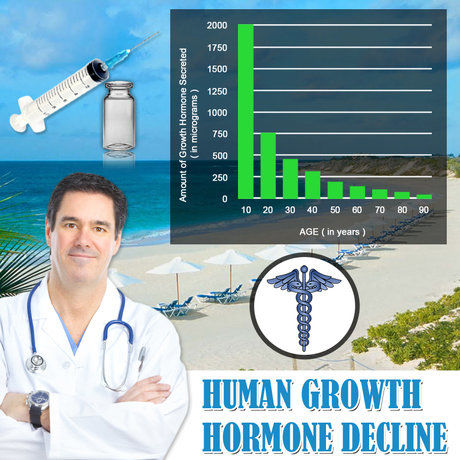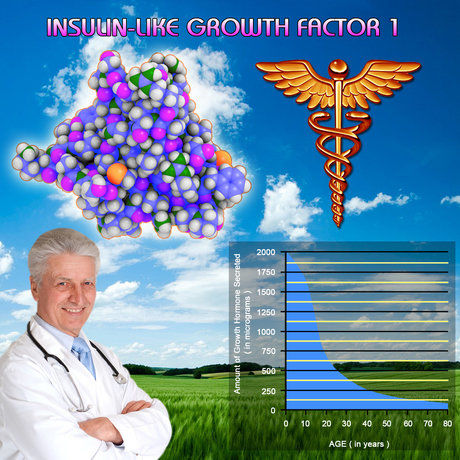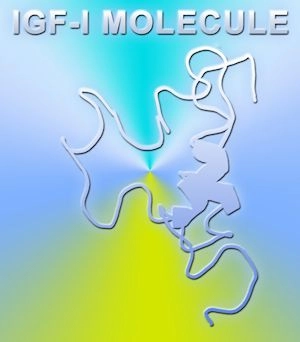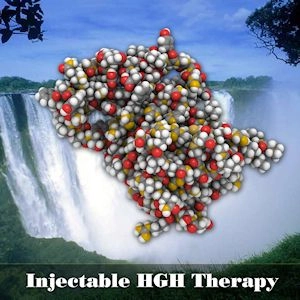Introduction
Escitalopram, a selective serotonin reuptake inhibitor (SSRI), is widely prescribed for the treatment of depression and anxiety disorders. As many American males seek effective management of these conditions, understanding how escitalopram interacts with other antidepressants is crucial for optimizing treatment outcomes. This article delves into the pharmacological interactions between escitalopram and other commonly used antidepressants, highlighting both synergistic and antagonistic effects.
Pharmacological Profile of Escitalopram
Escitalopram functions by selectively inhibiting the reuptake of serotonin, thereby increasing its availability in the synaptic cleft. This mechanism is pivotal in alleviating symptoms of depression and anxiety. However, when combined with other antidepressants, the pharmacodynamics and pharmacokinetics of escitalopram can be significantly altered, necessitating a careful consideration of potential interactions.
Interactions with SSRIs
Combining escitalopram with other SSRIs, such as fluoxetine or sertraline, can lead to an increased risk of serotonin syndrome—a potentially life-threatening condition characterized by agitation, confusion, and hyperthermia. American males on such combinations should be closely monitored for these symptoms. While some studies suggest that lower doses of both medications might mitigate this risk, the general consensus is to avoid such combinations unless absolutely necessary and under strict medical supervision.
Interactions with SNRIs
Serotonin-norepinephrine reuptake inhibitors (SNRIs) like venlafaxine and duloxetine are also commonly prescribed for depression. When used with escitalopram, there is an elevated risk of serotonin syndrome due to the dual action on serotonin reuptake. However, some clinicians report that in certain cases, particularly in treatment-resistant depression, a cautious combination of escitalopram and an SNRI can be beneficial. This approach requires meticulous dose adjustments and vigilant monitoring for adverse effects.
Interactions with Tricyclic Antidepressants
Tricyclic antidepressants (TCAs) such as amitriptyline and nortriptyline have a different mechanism of action, primarily affecting norepinephrine and serotonin reuptake. When combined with escitalopram, there is a potential for increased serotonin levels, which again raises the risk of serotonin syndrome. Additionally, TCAs can potentiate the effects of escitalopram, leading to increased sedation and anticholinergic side effects. American males considering this combination should be aware of these risks and discuss them thoroughly with their healthcare provider.
Interactions with MAOIs
Monoamine oxidase inhibitors (MAOIs) like phenelzine and tranylcypromine are less commonly used today but still relevant in certain cases. The combination of escitalopram with MAOIs is contraindicated due to the high risk of serotonin syndrome and hypertensive crisis. American males should be advised to allow a sufficient washout period (typically two weeks) before transitioning from an MAOI to escitalopram or vice versa.
Interactions with Atypical Antidepressants
Atypical antidepressants such as bupropion and mirtazapine have unique mechanisms of action. Bupropion, which primarily affects dopamine and norepinephrine, can be safely combined with escitalopram in some cases, potentially enhancing the therapeutic effect without significantly increasing the risk of serotonin syndrome. Mirtazapine, which enhances serotonin and norepinephrine release, may also be combined with escitalopram, but caution is advised due to the potential for increased sedation and weight gain.
Clinical Considerations and Monitoring
For American males on escitalopram, it is essential to consider the potential interactions with other antidepressants. Regular monitoring for signs of serotonin syndrome, such as agitation, tremors, and hyperthermia, is crucial. Additionally, healthcare providers should assess the overall efficacy of the treatment regimen and adjust dosages as necessary to balance therapeutic benefits with potential risks.
Conclusion
Understanding the interactions between escitalopram and other antidepressants is vital for American males seeking effective management of depression and anxiety. While some combinations can enhance therapeutic outcomes, others pose significant risks. A tailored approach, involving close collaboration with healthcare providers, is essential to ensure safe and effective treatment. By staying informed about these interactions, American males can better navigate their mental health journey with confidence and care.
Contact Us For A Fast And Professional Response

- Escitalopram's Efficacy in Treating OCD Among American Males: A Clinical Review [Last Updated On: February 25th, 2025] [Originally Added On: February 25th, 2025]
- The Escitalopram Overview Introduction [Last Updated On: March 2nd, 2025] [Originally Added On: March 2nd, 2025]
- Exploring the Cognitive Enhancements of Escitalopram: Beyond Antidepressant and Anxiolytic Effects [Last Updated On: March 3rd, 2025] [Originally Added On: March 3rd, 2025]
- Exploring Escitalopram's Impact on Male Fertility and Reproductive Health [Last Updated On: March 4th, 2025] [Originally Added On: March 4th, 2025]
- Exploring Escitalopram's Efficacy and Side Effects in American Men with Mood Disorders [Last Updated On: March 5th, 2025] [Originally Added On: March 5th, 2025]
- Understanding Escitalopram for Treating Depression and Anxiety in Adolescent American Males [Last Updated On: March 6th, 2025] [Originally Added On: March 6th, 2025]
- Decoding Escitalopram: Chemical Structure, Functionality, and Clinical Efficacy Demystified [Last Updated On: March 7th, 2025] [Originally Added On: March 7th, 2025]
- Exploring the Impact of Escitalopram on Panic Disorders: A Comprehensive Review for American Males [Last Updated On: March 7th, 2025] [Originally Added On: March 7th, 2025]
- Exploring the Effects of Escitalopram on Weight in American Males: A Comprehensive Review [Last Updated On: March 8th, 2025] [Originally Added On: March 8th, 2025]
- Safe Escitalopram Withdrawal Guide for American Men: Symptoms, Strategies, and Professional Support [Last Updated On: March 8th, 2025] [Originally Added On: March 8th, 2025]
- Escitalopram: A Comprehensive Guide to Its Efficacy and Benefits in Mental Health Treatment [Last Updated On: March 9th, 2025] [Originally Added On: March 9th, 2025]
- Exploring the Critical Drug Interactions of Escitalopram: A Guide for American Males [Last Updated On: March 12th, 2025] [Originally Added On: March 12th, 2025]
- Exploring the Impact of Escitalopram on Mental Health: A Focus on American Males [Last Updated On: March 13th, 2025] [Originally Added On: March 13th, 2025]
- Navigating Escitalopram Use in Elderly American Males: Essential Safety Measures [Last Updated On: March 15th, 2025] [Originally Added On: March 15th, 2025]
- Escitalopram's Efficacy in Treating PTSD Among American Males: A Comprehensive Review [Last Updated On: March 16th, 2025] [Originally Added On: March 16th, 2025]
- Enhancing Escitalopram Adherence in American Men: Strategies and Challenges [Last Updated On: March 17th, 2025] [Originally Added On: March 17th, 2025]
- Escitalopram: Benefits, Side Effects, and Use in American Males for Depression and Anxiety [Last Updated On: March 17th, 2025] [Originally Added On: March 17th, 2025]
- Escitalopram's Impact on American Males: Case Studies in Anxiety and Depression Management [Last Updated On: March 18th, 2025] [Originally Added On: March 18th, 2025]
- Escitalopram Overdose: Symptoms, Immediate Actions, and Prevention for American Males [Last Updated On: March 19th, 2025] [Originally Added On: March 19th, 2025]
- Escitalopram and Liver Health: Monitoring and Management for American Males [Last Updated On: March 19th, 2025] [Originally Added On: March 19th, 2025]
- Escitalopram's Impact on Sleep in American Males: Effects and Management Strategies [Last Updated On: March 20th, 2025] [Originally Added On: March 20th, 2025]
- Escitalopram's Pharmacodynamics and Impact on American Males: A Comprehensive Overview [Last Updated On: March 21st, 2025] [Originally Added On: March 21st, 2025]
- American Men's Journeys with Escitalopram: Navigating Mental Health Challenges [Last Updated On: March 21st, 2025] [Originally Added On: March 21st, 2025]
- Escitalopram's Impact on Blood Pressure in American Males: A Clinical Study Analysis [Last Updated On: March 21st, 2025] [Originally Added On: March 21st, 2025]
- Escitalopram Pharmacokinetics: A Guide for American Male Clinicians [Last Updated On: March 21st, 2025] [Originally Added On: March 21st, 2025]
- Guide to Switching from Fluoxetine to Escitalopram for American Males [Last Updated On: March 22nd, 2025] [Originally Added On: March 22nd, 2025]
- CBT and Escitalopram: A Synergistic Approach to Mental Health for American Men [Last Updated On: March 22nd, 2025] [Originally Added On: March 22nd, 2025]
- Escitalopram's Role in Treating Social Anxiety Disorder in American Males: Efficacy and Considerations [Last Updated On: March 22nd, 2025] [Originally Added On: March 22nd, 2025]
- Escitalopram: Key Insights for Treating Depression and Anxiety in American Males [Last Updated On: March 23rd, 2025] [Originally Added On: March 23rd, 2025]
- Guidelines for Pediatric Use of Escitalopram: Safety, Dosage, and Monitoring for American Males [Last Updated On: March 23rd, 2025] [Originally Added On: March 23rd, 2025]
- Escitalopram: Managing Menopausal Depression and Supporting Partners [Last Updated On: March 23rd, 2025] [Originally Added On: March 23rd, 2025]
- Escitalopram in Palliative Care: Enhancing Quality of Life for American Males [Last Updated On: March 23rd, 2025] [Originally Added On: March 23rd, 2025]
- Escitalopram: From Lab to Pharmacy, Impact on American Males' Mental Health [Last Updated On: March 23rd, 2025] [Originally Added On: March 23rd, 2025]
- Escitalopram: Effective GAD Treatment for American Males [Last Updated On: March 23rd, 2025] [Originally Added On: March 23rd, 2025]
- Escitalopram Use and Interactions: A Guide for American Males [Last Updated On: March 24th, 2025] [Originally Added On: March 24th, 2025]
- Escitalopram-Induced Mania in American Males: Risks, Symptoms, and Management [Last Updated On: March 24th, 2025] [Originally Added On: March 24th, 2025]
- Escitalopram and Serotonin Syndrome Risks in American Males: Symptoms, Prevention, and Management [Last Updated On: March 24th, 2025] [Originally Added On: March 24th, 2025]
- Escitalopram in Geriatric Psychiatry: Efficacy, Safety, and Considerations for American Males [Last Updated On: March 24th, 2025] [Originally Added On: March 24th, 2025]
- Escitalopram's Role in Managing Major Depressive Disorder in American Males [Last Updated On: March 24th, 2025] [Originally Added On: March 24th, 2025]
- Escitalopram: Enhancing Cognitive Function and Mental Health in American Men [Last Updated On: March 24th, 2025] [Originally Added On: March 24th, 2025]
- Escitalopram's Impact on Co-morbid Physical Disorders in American Males: A Comprehensive Review [Last Updated On: March 25th, 2025] [Originally Added On: March 25th, 2025]
- Escitalopram: A Key Treatment for Men with Seasonal Affective Disorder [Last Updated On: March 25th, 2025] [Originally Added On: March 25th, 2025]
- Escitalopram Safety in American Males with Liver Disease: Guidelines and Monitoring [Last Updated On: March 25th, 2025] [Originally Added On: March 25th, 2025]
- Escitalopram's Efficacy in Treating Anxiety Among American Males: A Comprehensive Review [Last Updated On: March 25th, 2025] [Originally Added On: March 25th, 2025]
- Escitalopram and Alcohol: Risks and Management for American Males [Last Updated On: March 25th, 2025] [Originally Added On: March 25th, 2025]
- Escitalopram: A Promising Treatment for Body Dysmorphic Disorder in American Males [Last Updated On: March 25th, 2025] [Originally Added On: March 25th, 2025]
- Escitalopram's Role in Managing Bipolar Disorder in American Males: Benefits and Monitoring [Last Updated On: March 25th, 2025] [Originally Added On: March 25th, 2025]
- Escitalopram's Efficacy in Treating Post-Stroke Depression in American Males [Last Updated On: March 25th, 2025] [Originally Added On: March 25th, 2025]
- Escitalopram: Enhancing Mental Health in American Males [Last Updated On: March 25th, 2025] [Originally Added On: March 25th, 2025]
- Managing Escitalopram's Sexual Side Effects in American Males: Strategies and Solutions [Last Updated On: March 25th, 2025] [Originally Added On: March 25th, 2025]
- Escitalopram: Effective MDD Treatment for American Males - Usage and Considerations [Last Updated On: March 25th, 2025] [Originally Added On: March 25th, 2025]
- Escitalopram: Effective Depression and Anxiety Treatment for American Males [Last Updated On: March 26th, 2025] [Originally Added On: March 26th, 2025]
- Escitalopram's Impact on Depression in American Male Adolescents: Efficacy and Safety [Last Updated On: March 26th, 2025] [Originally Added On: March 26th, 2025]
- Escitalopram's Evolving Role in Treating American Male Psychiatric Disorders [Last Updated On: March 26th, 2025] [Originally Added On: March 26th, 2025]
- American Man's Journey to Mental Wellness with Escitalopram: A Case Study [Last Updated On: March 27th, 2025] [Originally Added On: March 27th, 2025]
- Escitalopram's Efficacy in Treating BPD Symptoms in American Males: A Pilot Study [Last Updated On: March 27th, 2025] [Originally Added On: March 27th, 2025]
- Escitalopram: A Promising Treatment for Neuropathic Pain in American Males [Last Updated On: March 27th, 2025] [Originally Added On: March 27th, 2025]
- Escitalopram's Cardiovascular Impact on American Males: Risks and Monitoring [Last Updated On: March 27th, 2025] [Originally Added On: March 27th, 2025]
- Escitalopram's Long-Term Use in American Males: Benefits, Risks, and Management [Last Updated On: March 28th, 2025] [Originally Added On: March 28th, 2025]
- Escitalopram: Managing Chronic Depression in American Males Effectively [Last Updated On: March 28th, 2025] [Originally Added On: March 28th, 2025]
- Escitalopram's Impact on Cognitive Skills in American Males: A Comprehensive Review [Last Updated On: March 29th, 2025] [Originally Added On: March 29th, 2025]
- Escitalopram's Role in Treating Eating Disorders Among American Males [Last Updated On: March 29th, 2025] [Originally Added On: March 29th, 2025]
- Escitalopram's Impact on Mood Disorders in American Males: Mechanisms and Efficacy [Last Updated On: March 30th, 2025] [Originally Added On: March 30th, 2025]
- Escitalopram's Efficacy in Treating Agoraphobia Among American Males: Clinical Insights [Last Updated On: March 30th, 2025] [Originally Added On: March 30th, 2025]
- Escitalopram: A Promising Treatment for Dysthymia in American Males [Last Updated On: March 31st, 2025] [Originally Added On: March 31st, 2025]
- Escitalopram's Role in Managing PMDD: Efficacy, Mechanism, and Considerations [Last Updated On: April 1st, 2025] [Originally Added On: April 1st, 2025]
- Escitalopram's Effects on Autonomic Nervous System in American Males: A Comprehensive Analysis [Last Updated On: April 1st, 2025] [Originally Added On: April 1st, 2025]
- Optimizing Escitalopram Dose Titration for American Males: A Medical Perspective [Last Updated On: April 2nd, 2025] [Originally Added On: April 2nd, 2025]
- Managing Escitalopram Withdrawal: Strategies for American Men [Last Updated On: April 5th, 2025] [Originally Added On: April 5th, 2025]
- Transitioning from Citalopram to Escitalopram: A Guide for American Males [Last Updated On: April 6th, 2025] [Originally Added On: April 6th, 2025]
- Escitalopram and Suicide Risk in American Male Adolescents: A Comprehensive Analysis [Last Updated On: April 7th, 2025] [Originally Added On: April 7th, 2025]
- Escitalopram Enhances Quality of Life in Depressed American Men: A Systematic Review [Last Updated On: April 9th, 2025] [Originally Added On: April 9th, 2025]
- Escitalopram and Psychotherapy: Enhancing Mental Health in American Males [Last Updated On: April 9th, 2025] [Originally Added On: April 9th, 2025]
- Escitalopram's Potential in Treating Postpartum Depression in American Males [Last Updated On: April 9th, 2025] [Originally Added On: April 9th, 2025]
- Escitalopram: A Vital Tool for Treating Depression and Anxiety in American Males [Last Updated On: April 10th, 2025] [Originally Added On: April 10th, 2025]
- Escitalopram and Diabetes Management in American Men: A Comprehensive Guide [Last Updated On: April 10th, 2025] [Originally Added On: April 10th, 2025]
- Genetic Factors Influencing Escitalopram Response in American Males: A Pharmacogenomic Approach [Last Updated On: April 10th, 2025] [Originally Added On: April 10th, 2025]
- Escitalopram's Role in Treating Body Image Disorders in American Males [Last Updated On: April 11th, 2025] [Originally Added On: April 11th, 2025]
- Managing Escitalopram Side Effects: A Guide for American Males [Last Updated On: April 13th, 2025] [Originally Added On: April 13th, 2025]
- Escitalopram's Potential in Treating Treatment-Resistant Depression in American Men [Last Updated On: April 14th, 2025] [Originally Added On: April 14th, 2025]

















